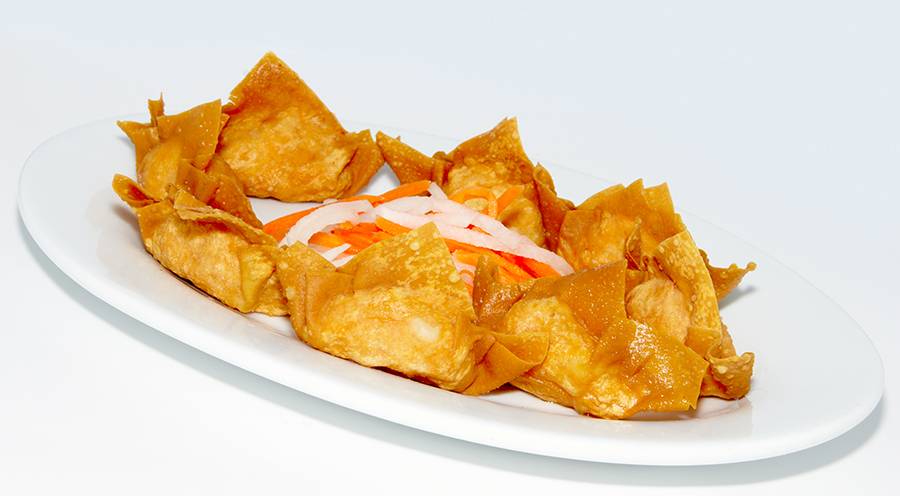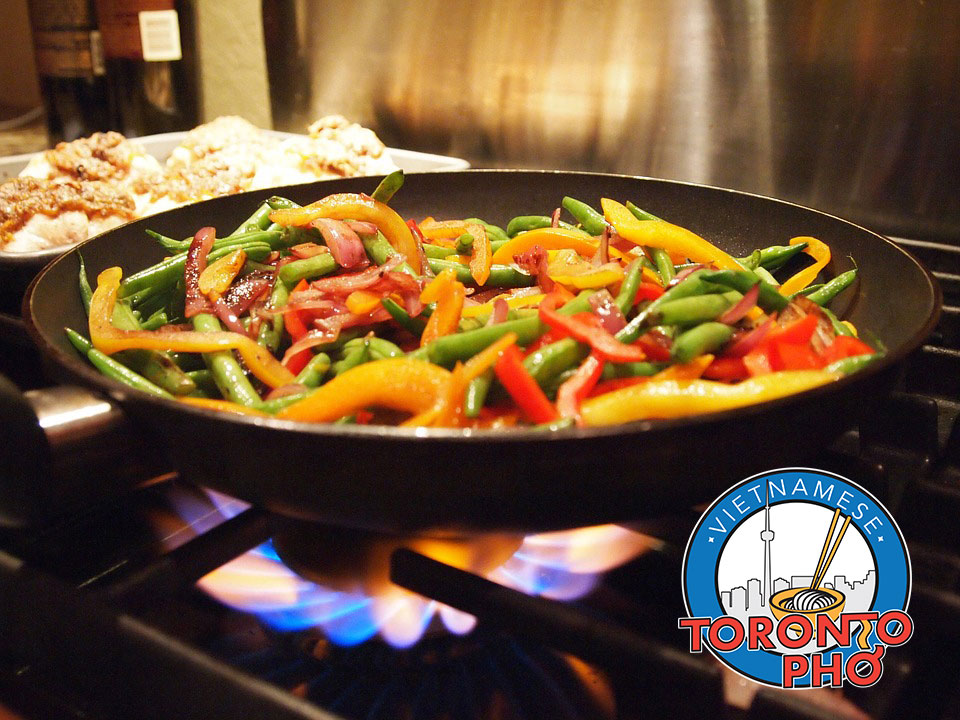
Vietnamese cooking is occupied by many different kinds of dishes. You will typically hear about pho first and foremost. Occasionally someone may mention banh cuon or another hearty Vietnamese dish but for the most part, you don’t hear about stir fry very much. This is somewhat understandable as stir fry is believed to be a Chinese cooking technique rather than a Vietnamese-invented method of preparation. That doesn’t mean there isn’t a Vietnamese influence on it though. Here’s a little more about how stir fry came to be.
A stir fry is a process of cooking as opposed to a dedicated recipe. You can essentially stir fry anything. All it is is frying an amount of food in very hot oil while stirring. It is a technique that originated centuries ago. It began to be popularized in the 1400s onwards when the wok developed to such an extent that quick cooking in hot oil was made possible. Stir fry for a long time was seen as a representation of affluence. Families who stir fry had to afford the oil and required fuel. For most people, they boiled and steamed their foods which is perhaps why Vietnamese pho has such a deep history among the people of Vietnam.
Gradually, from the twentieth century onwards, stir frying grew more and more popular as affordability made it ok for families to enjoy veggies, meats, and fish in such a method. These days, when we stir fry something, we are doing it for flavor and/or as a sort of nod to our neighbors in China. The sweet and sour flavors in some Vietnamese cooking are brought out in even fuller force through a stir fry. A simple chicken stir fry for example can bring together Vietnam favourites like rice, chicken, Vietnamese-grown herbs and spices, and of course fish sauce. Nuoc mam, a Vietnamese fish sauce, adds so much.
Read more: Why a Vietnamese Stir Fry Continues to Be Just as Popular as Pho to Some Families

Like any homegrown ethnic cuisine, a large influence over what dishes are served on any given night is the time of year it is and the season. Vietnam experiences drastic changes in weather, culture, and cuisine depending on the season. The same food all year round – I think not! If you visit Vietnam, you’ll find out firsthand the ways weather and climate influence eating. Here’s a rundown of some of our favourite dishes divided according to season.
Spring
Spring’s filled with traditional Vietnamese dishes, such as banh chung. This rice cake is made according to a mix of sticky rice, beans, pork, and wrapped in banana leaves. Sticky rice is actually a very familiar food to eat during spring time. Spring rolls are very popular during a Vietnamese spring, made from things like pork, shrimp, mushroom, onions, eggs, salt, and pepper. Lastly picked onions are very flavorful and a common addition to the fatty foods mentioned above.
Summer
Summer’s a great time for cool desserts and cuisine that recharges the batteries. After all, Vietnam’s scorching in the summer so a lot of what you’ll find are easy-to-please meals. For example, white jelly cubes in sweet porridge are trending in Vietnam right now in a big way. As expected, this is whit jelly cubes made from milk and lychee submerged in a mix of sugar water and grapefruit flowers. Douhua soy milk, sweet and sticky glutinous balls known as banh troi, and mixed fruits are all very common and favourites as Vietnamese summer desserts.
Read more: See the Best Seasonal Vietnamese Dishes for Spring, Summer, Fall, and Winter
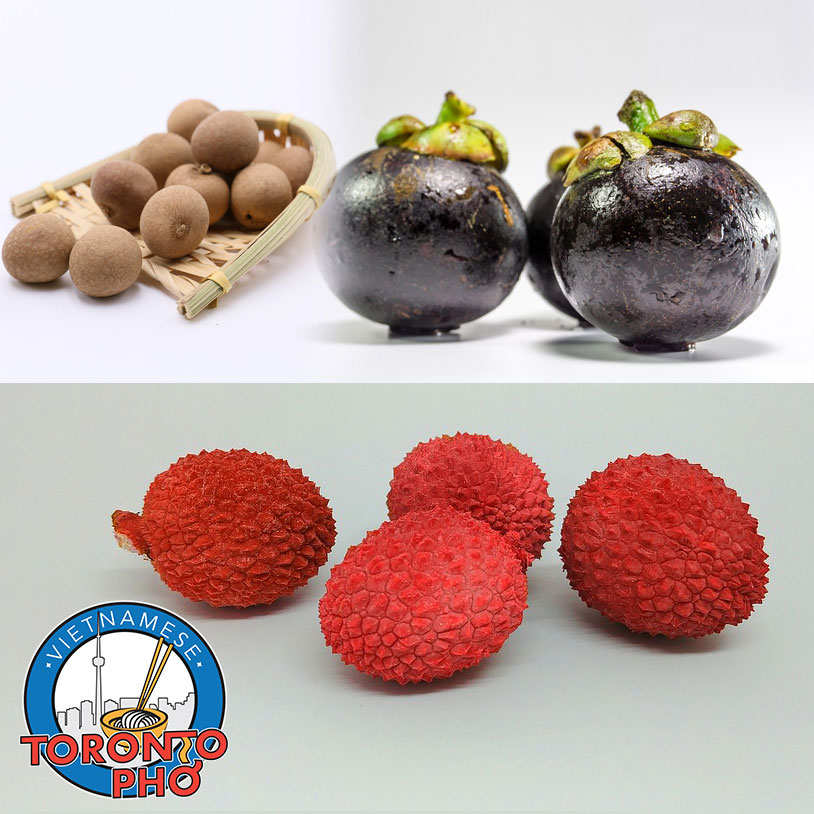
A Canadian may not think it but Vietnam is actually a tropical country with a mix of what Torontonians would label as ‘exotic fruit’. Travelers who come to Vietnam have the luxury of expanding their palate and partaking in these adventurous, colorful fruits. Here in Toronto, unfortunately, we don’t always have access. As a top Toronto Vietnamese restaurant, we try to mix in fruit whenever we can for our patrons. Here’s a few of the Vietnamese fruits we know and miss from our homeland.
Lychee
Lychee is very, very popular in Vietnam, particularly at the beginning of summer. Lychee’s skin is dark red and it’s probably the easiest fruit you could ever peel. The juice white center’s suited up with vitamin C and sweetness. Lychee can be served raw or made into a beverage, adding additional sugars and fruits like mango or dragon fruit along with it.
Mangosteen
Mangosteen is widely considered to be one of the most delicious fruits in the world. Considered superfruit-esque, there are a numerous health benefits associated to its mix of nutrients and antioxidants. The soft, sweet center is balanced with an outer purple skin, absolutely gorgeous.
Read more: Vietnamese Fruits We Miss So Much Native to Vietnam and Well Worth a Bite!
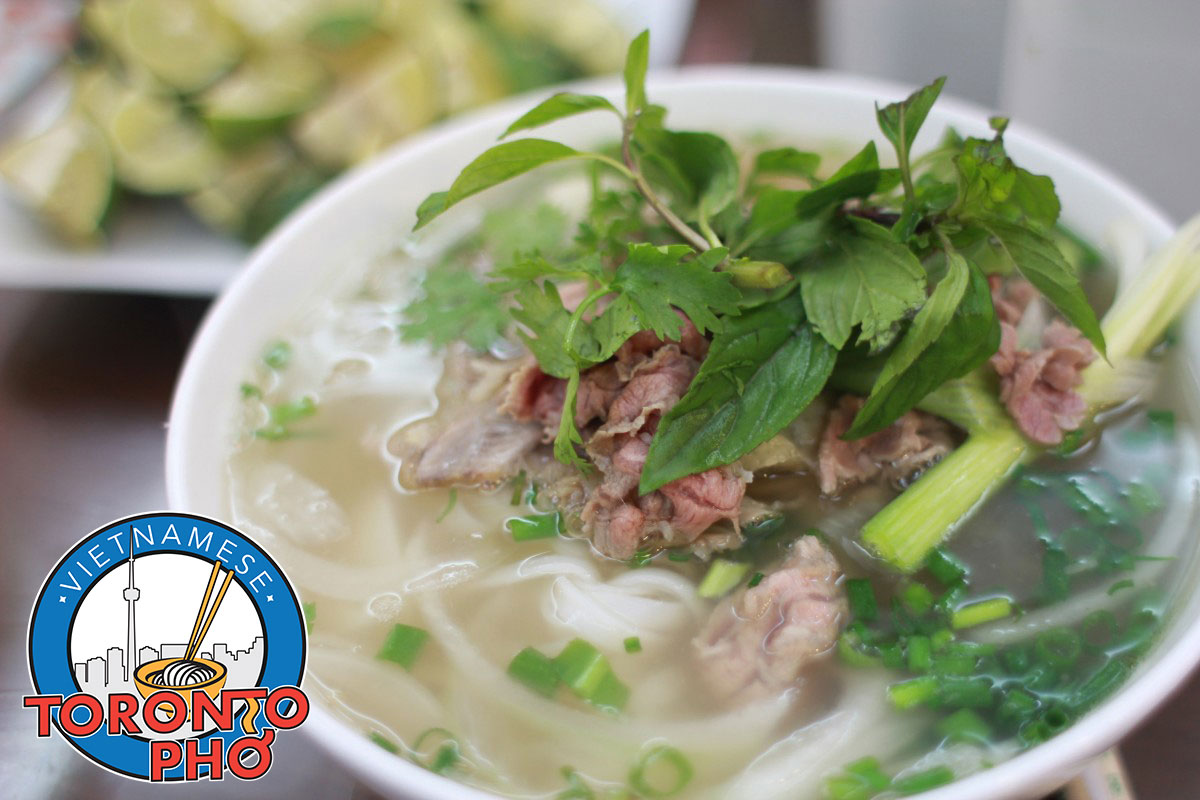
Toronto foodies are coming in droves to try one of the world’s trendiest cuisines and one that’s heating up in the restaurant scene here in the city. We are talking about Vietnamese cuisine of course.
As families from Vietnam spread across the globe in the post-war period, they brought with them homegrown recipes that are on their way to becoming stone cold classics. Vietnamese cuisine creations are packed with flavors and taste unique to this part of the world, delivered in an Instagram-friendly presentation. Pleasing to the eye and the palate both, the cuisine is one every foodie should try.
What’s so attractive about a Vietnamese dish is that they’re made to be balanced. When a sugar is added, a salt is as well. When a dish involves a little bit of spice, something anti-acidic is added in to establish a clear balance. In this era of very healthy eating, this has also given rise to vegetarian Vietnamese eating. These dishes bring together protein source, carbs of some kind, herbs and spices, and careful consideration on what else to include. There are all sorts of contemporary modifications made on classic Vietnamese eats such as pho to bring them to vegetarian or vegan standards. For foodies, they’re well worth a taste!
Like a few other ethnic cuisines, Vietnamese is having a bit of a moment right now. It’s a very diverse and seductive cuisine, perhaps one of the most diverse in the world. Vietnamese brings together regal French influence with age-old Asian flavors and techniques. There’s a deep cultural history to a lot of the cooking in this cuisine, in addition to Vietnamese being called one of the healthiest cuisines in the world. The heath of Vietnamese has everything to do with the balance of nutrients managed throughout. Again, we come to a philosophy of balance. Unlike Chinese, Japanese, Thai, or other cuisines, you won’t ever find a dish prepared Vietnamese-style to be so much of any one thing.
Read more: Toronto Foodies Flocking to Vietnamese Cooking for Tasty, Vegetarian, and Broth-y Dishes
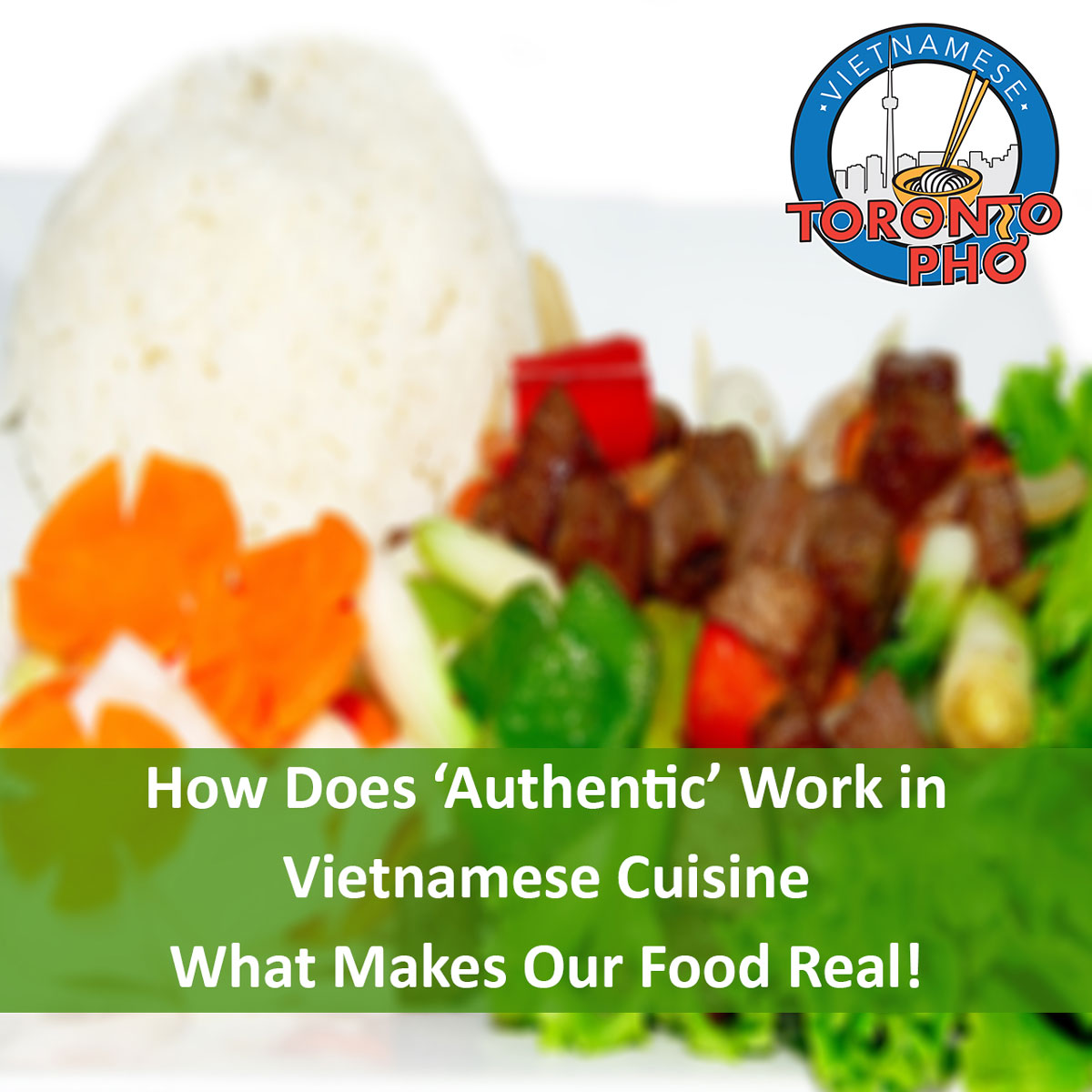
It’s a Thursday night and at TorontoPHO, the restaurant is packed with families, couples, and Torontonians from across the city. At one table, young and social media savvy foodies are snapping pictures of some of Toronto’s most excellent Vietnamese cooking. At another, a senior Asian couple are slurping up pho prepared authentically to the highest degree. We consider all of our food ‘authentic’ but what exactly makes a dish authentic? It isn’t just a buzz word or an adjective we like to throw down on our marketing.
Authentic, in our view, means truly Vietnamese. The recipes we share in our restaurant have been passed down from grandparents to parents to their children and to their children's children. They are pure Vietnamese Canadian dishes, a little mix of decades-old ways of making stir fry and pho with a little of what we've learned here. But does this change the nature of what’s authentic and what isn’t in this classic Vietnamese Toronto restaurant – not in this context.
Though we have mixed recipes, we also have pure Vietnamese recipes that are clear-cut family tradition. We source ingredients direct from Vietnam to pull together some of our broths such as the ones we utilize in pho and the spices we drop across any of our stir fry. The cooking methods we use are also very similar, if not identical, to what’s used in cuisine and restaurants in Vietnam. Our head chefs are accredited specifically in this style of cooking. They are highly experienced and expert-level Vietnamese chefs.
Read more: How Does ‘Authentic’ Work in Vietnamese Cuisine – What Makes Our Food Real!
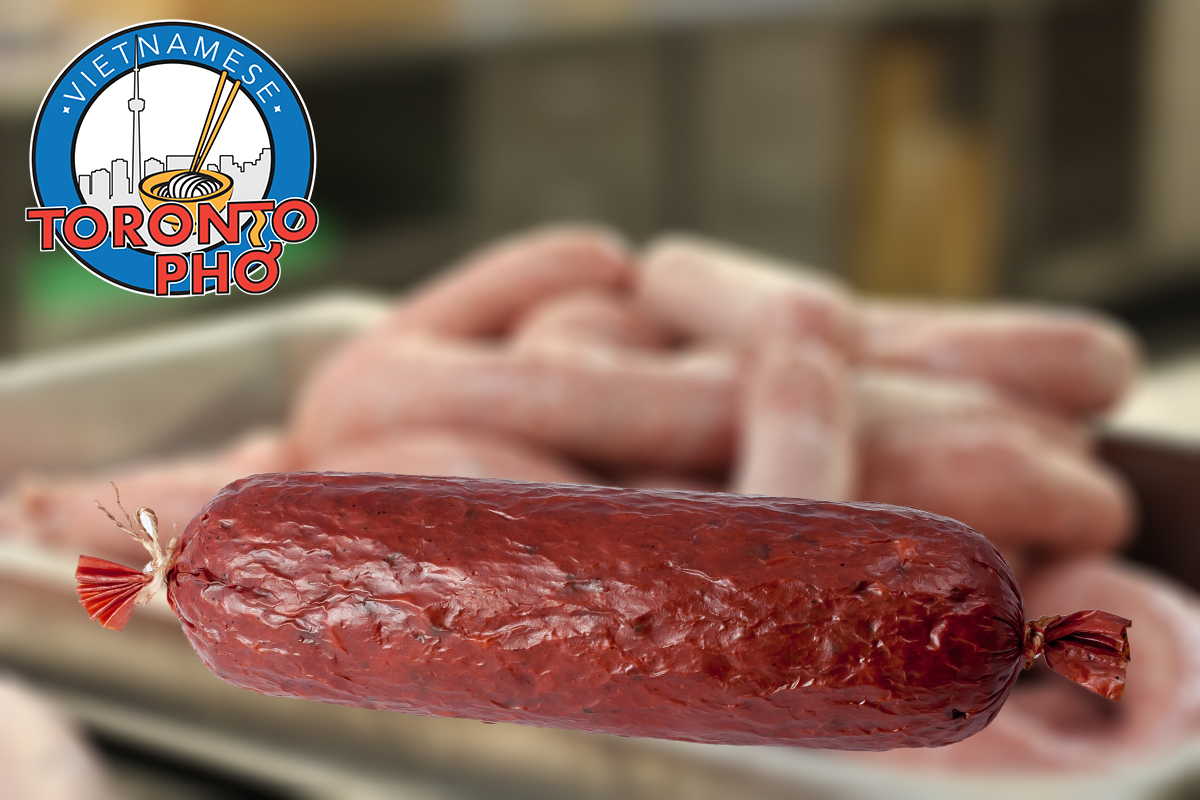
What is a Vietnamese sausage? What is the meat actually made of? When someone says ‘Vietnamese sausage’, a person could be referring to any number of a half-dozen sausages. Usually, what is meant by a Vietnamese sausage is cha lua, or sometimes called gio lua. This is Vietnam’s most common sausage, made from a pork predominantly and usually wrapped in banana leaves. Sliced Vietnamese sausage can be served in several different ways, provided on its’ own, given over banh cuon, and/or can be garnished with fried shallots.
The meat in Vietnamese sausage is a recipe of lean pork, potato starch, garlic, ground black pepper, and sauce. Although the sausage has recently found its way into Thai cuisine, it’s Vietnamese all the way from the use of fish sauce to the way the pork is prepared. The pork is usually pounded until it becomes a paste. When assembling this type of sausage, the pork is not chopped or grounded in any way. Doing so would make the meat fibrous, dry, and crumbly. Pounding it down, this keeps it wet, moistened, and ready to be purposed in a sausage.
More Articles ...
Page 40 of 52

















